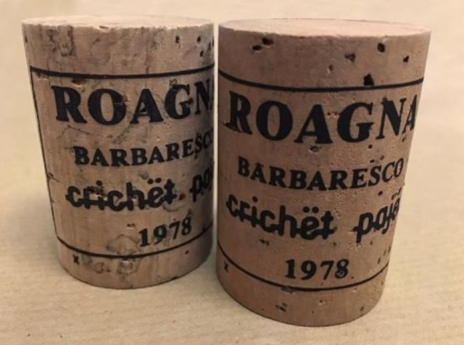
2 MAR 2023 Nebbiolo — A Guide to the BasicsUnlike many other great grape varieties, Nebbiolo is geographically limited. A handful of very good examples can be found in Baja California and Arizona, but this is a grape whose reputation is firmly rooted in Italy's Piedmont region, where it reaches its peak with Barolo and Barbaresco. These are wines that often evolve over the decades into reds of haunting perfume, unforgettable savoriness, and food-pairing magnificence. What is Nebbiolo Wine? Nebbiolo is the name of the red grape variety that is used to produce the great bottlings of Barolo and Barbaresco, both of which are required by law to be crafted entirely from it. It's also at the heart of the red wines of nearby Roero, also in Piedmont, as well as Gattinara. In all four places, the wines produced from Nebbiolo show both the inherent character of the grape variety itself as well as the unique attributes of the terroir and micro-climate in each. Where Does Nebbiolo Wine Come From? Nebbiolo is most famously grown in the Piedmont (or, in Italian, Piemonte) region of Italy, which is located in the northwest of the country. The two most famous wines from Piedmont are both crafted entirely from Nebbiolo: Barolo and Barbaresco. Traditionally, Barolo was the more powerful of the two, but painting either with too broad of a brush is inherently misleading. Since each is composed of so many constituent communes, individual hillsides, single vineyards, and more, the range of styles and expressions is remarkable. The Nebbiolo-based wines in Barolo's La Morra, for example, are very different from the ones grown in Serralunga d'Alba. In Barbaresco, the wines from Neive are recognizably different from the ones grown in Treiso. And when it comes to single vineyards and MGAs (essentially the Italian version of the French concept of cru), the parsing out of the land gets even more granular. In addition to Barolo and Barbaresco, excellent Nebbiolo-based wines are made in Roero, also in Piedmont. There, Nebbiolo is the heart of both Roero and Roero Riserva, as it is with Gattinara, another less-famous yet still very worthy Nebbiolo-based wine. Langhe Nebbiolo is a red wine based on its namesake grape variety, and is a wonderful way to experience Piedmont's Nebbiolo-based red wines without having to spend a lot of money, or even usually wait all that long for the wine to be ready. (Barolo and Barbaresco often need several years to mature before they're at their best.) In addition, pockets of Nebbiolo can be found in Mexico's Baja California as well as in Arizona, where Caduceus Cellars produces excellent ones. Why Should You Drink Nebbiolo Wine? Nebbiolo produces some of the most profound wines in Italy. Among the great reds of the country, it's typically listed alongside standouts like Brunello di Montalcino and Chianti Classico (both Sangiovese-based wines), among others. Nebbiolo not only produces excellent wine as a result of the character of the variety itself, but it also has the ability to transmit the nature of the land in which it's grown with particular clarity and profundity. It is deeply tied to this part of Italy in long-standing and fascinating ways. Wines produced from Nebbiolo also have the ability to age brilliantly, which makes them excellent additions to personal wine collections. A good strategy for collecting wines crafted from the variety is to stock up on earlier-drinking ones, like Roero Rosso or Langhe Nebbiolo. What Does Nebbiolo Taste Like? Nebbiolo, for all its age-worthiness when grown in the best locations, is actually not an overtly powerful grape variety. Its color tends towards the translucent, as opposed to more opaque and dark reds from grapes like Cabernet Sauvignon or Syrah. Still, these wines have plenty of complexity and structure, and the best examples are energetic with acidity and framed with assertive tannins that enable them to age for decades. In their youth, Nebbiolo-based red wines tend to showcase berries and cherries, as well as hints of citrus along the lines of blood orange, the savoriness of minerals or tar, and hints of mushrooms. As these wines mature, however, roses and truffles often emerge, and alongside the fruit and tar, the resulting complexity and depth is nothing less than haunting. Nebbiolo should be enjoyed from a Nebbiolo or Pinot Nior glass, and at slightly less cool than cellar temperature. Still, don't chill them down too much: Cold Nebbiolo will come off as off-puttingly tannic and astringent. Decanting a great bottle of Barolo or Barbaresco is generally a good idea, as is pairing it with food. Nebbiolo with truffles is a classic — in Piedmont, a beloved standard is the egg-yolk-rich pasta tajarin with white truffles shaved on top. Nebbiolo also works very well with beef and hard cheeses; the fat and protein in the food helps to tame the wine's structure and allow more of its inner complexity to shine through.
Freedman, Brian (2002). Nebbiolo - A Guide to the Basics. Sourced from https://bit.ly/3KQYEG4
|
Archive
|







